Zebron ZB-1701 GC Columns

Alternate Selectivity for Mid-Polarity Analyses
- Fast run and re equilibration times for enhanced sample throughput and productivity
- Provides alternate selectivity to phenyl phases with similar polarity
- Good peak shape for active analytes
Want an even more rugged alternative for pesticide analysis? See ZB-MutliResidue-1
Testing Endrin and DDT? See ZB-1701
Recommended Use
Alcohols, Amines, Aromatic Hydrocarbons, Drugs, Esters, PAHs, PCBs, Pharmaceutical Intermediates, Phenols, Solvents, Steroids, TMS Sugars, Tranquilizers

Recommended Use Alcohols, Amines, Drugs, Esters, PAHs, PCBs, Pharmaceutical Intermediates, Phenols, Solvents, Steroids, TMS Sugars, Tranquilizers |
Applications
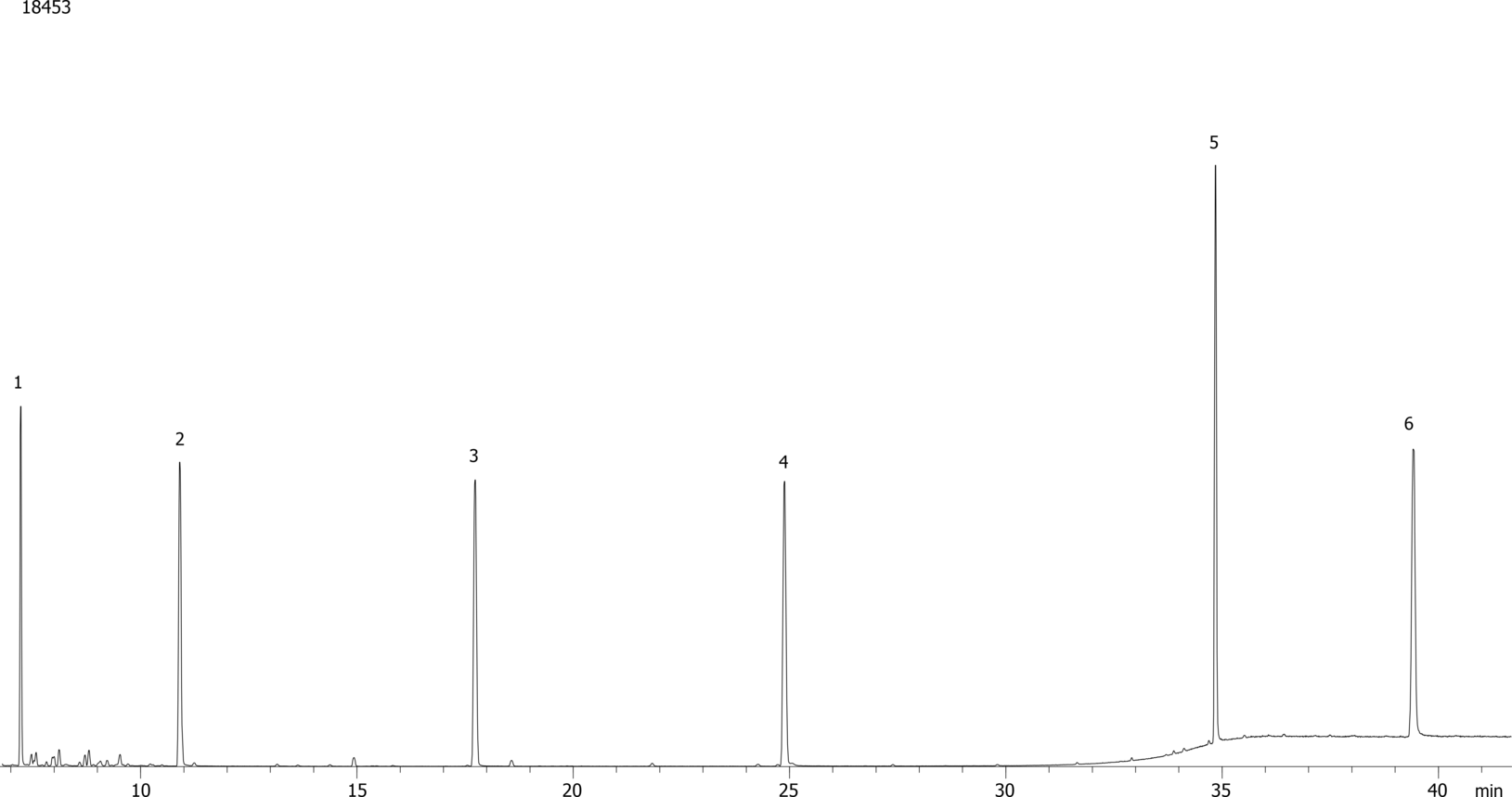
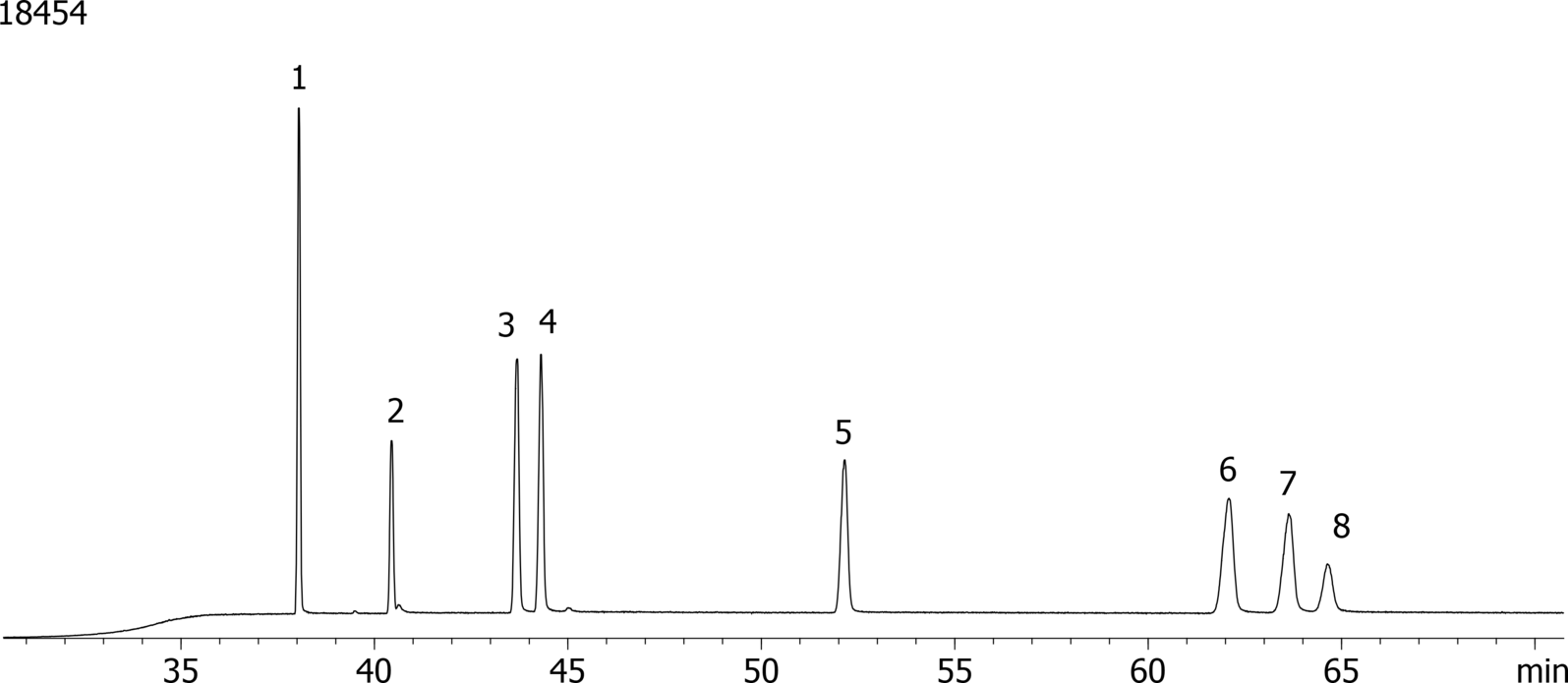
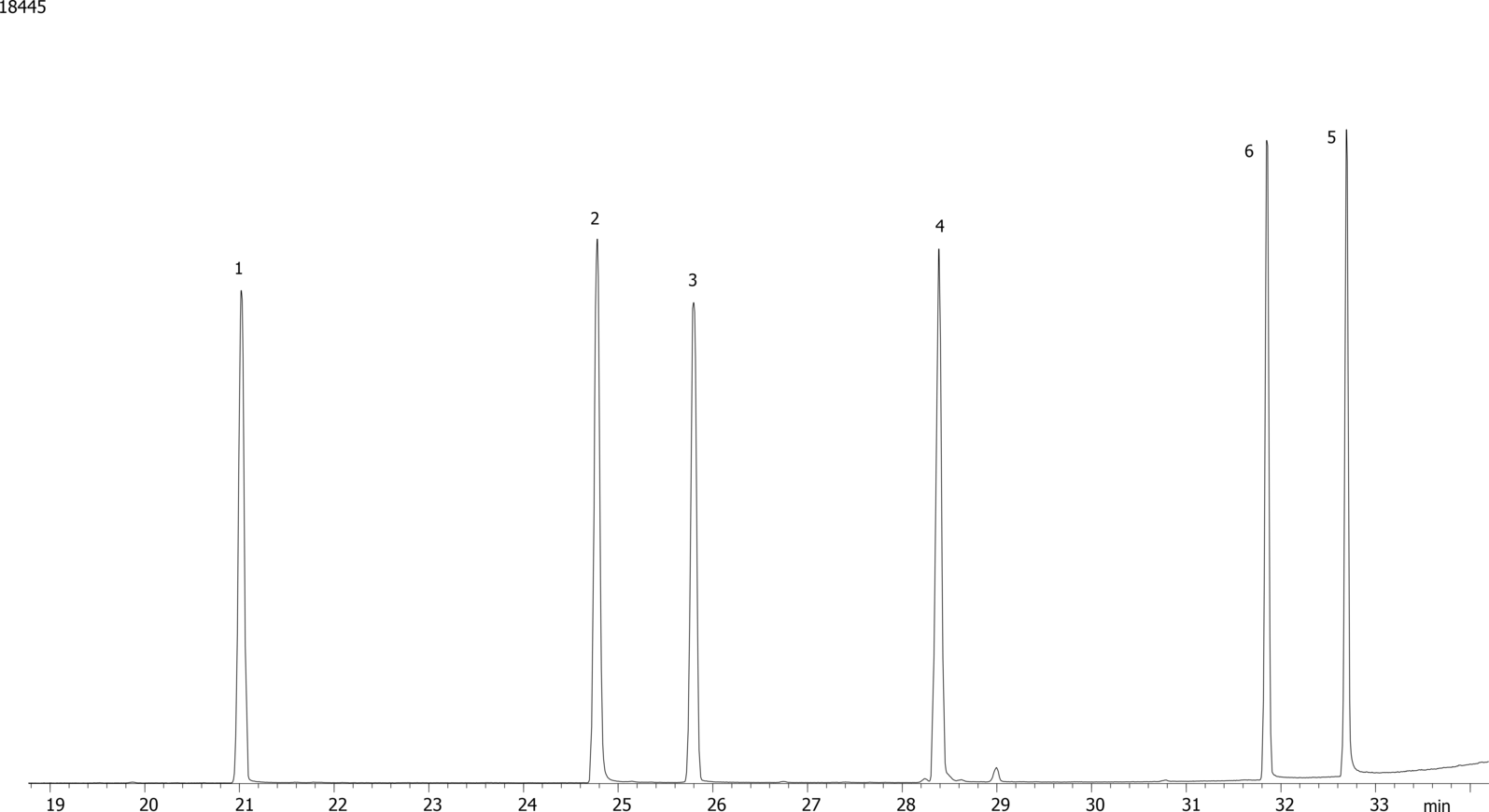
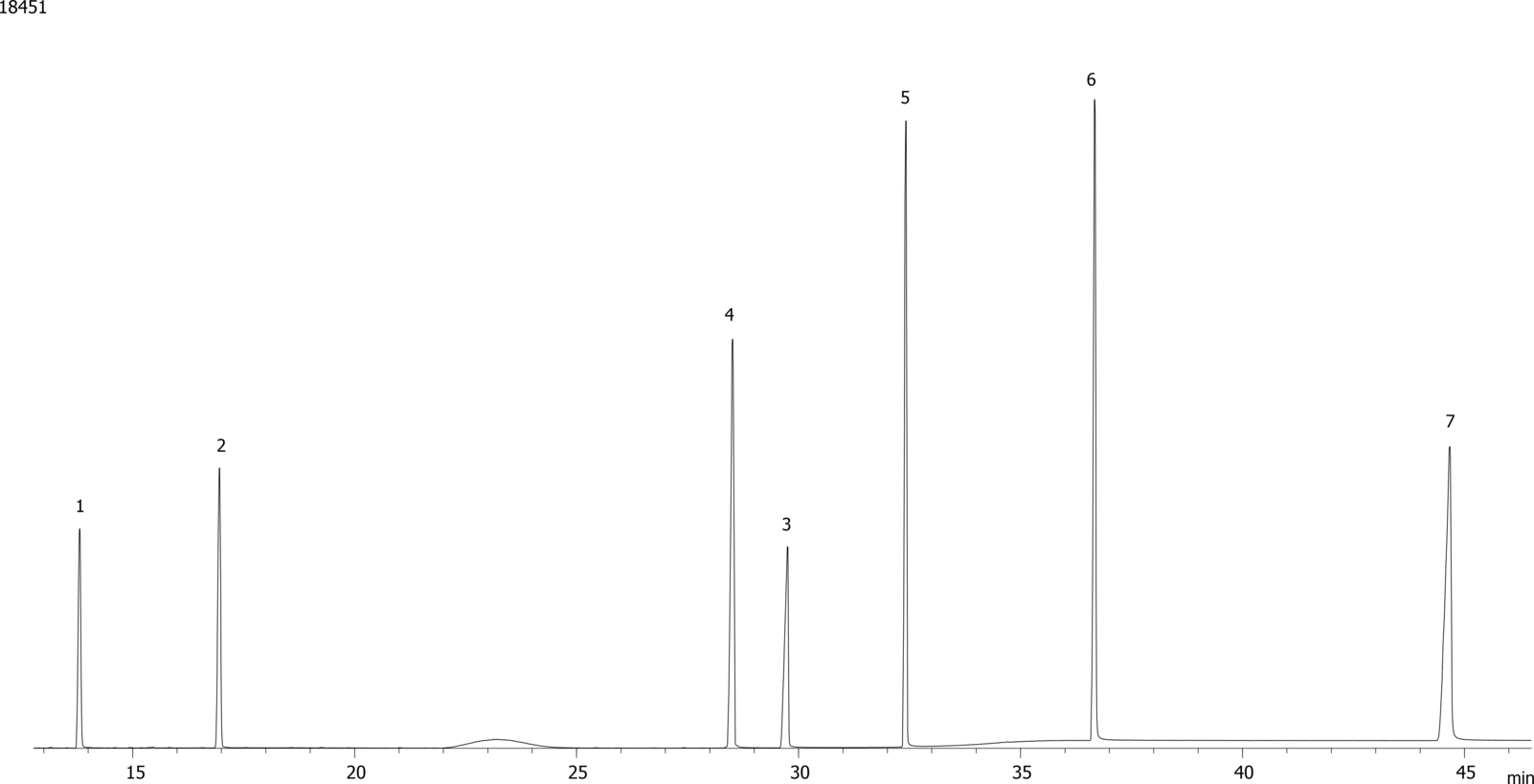
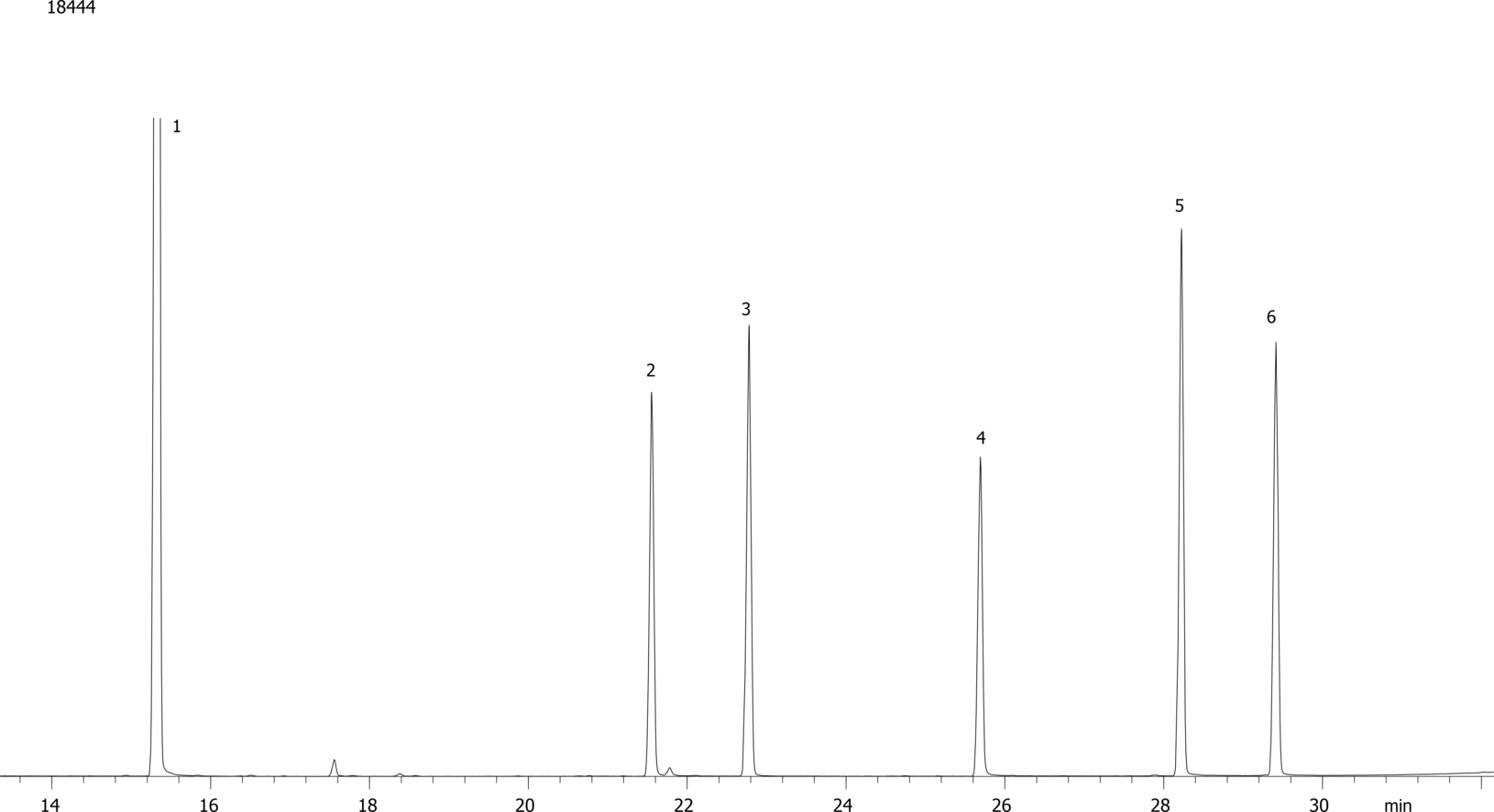

Upgrade to Zebron from any 14 % cyanopropylphenyl / 86 % dimethylpolysiloxane phase:
| Agilent® | Restek® | SGE® | Supelco® | OV® |
|---|---|---|---|---|
| DB®-1701 | Rtx®-1701 | BP10 | SPB®-1701 | OV-1701 |
| CP-Sil 19 CB | Rtx-VMS | Equity®-1701 |
Good Peak Shape for Active Analytes
Aromatic Amines by GC-MS
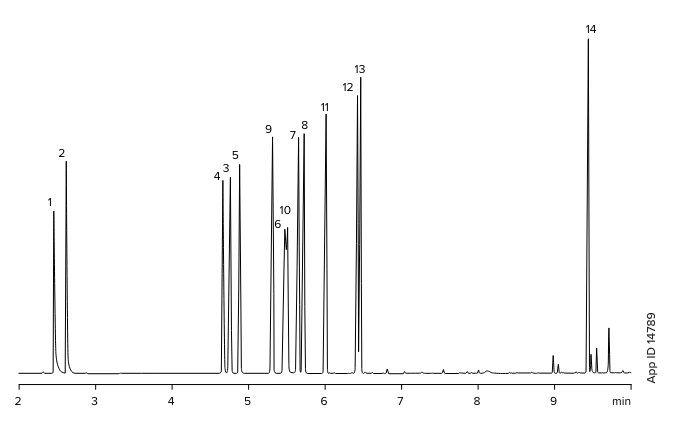
|
Column:
Zebron ZB-1701
|
|
|
Dimension:
30 meter x 0.25 mm x 0.25 µm
|
|
|
Part No.:
|
|
|
Injection:
Split 15:1 @ 220 °C, 1 µL
|
|
|
Oven Program:
60 °C for 1 min to 110 °C @ 30 °C/min to
135 °C @ 9 °C/min to 260 °C @ 30 °C/min for 2 min |
|
|
Detector:
MSD @ 180 °C |
|
|
Samples:
Analytes are at 1.58 mg/mL each
1. Piperidine
2. 2-Methylpiperidine
3. Aniline
4. Benzylamine
5. α-Phenylethylamine
6. N-Methylaniline
7. m-Toluidine
8. o-Toluidine
9. N,N-Dimethylaniline
10. β-Phenylethylamine
11. N-Ethylaniline
12. 2,4-Dimethylaniline
13. N,N-Diethylaniline
14. Dibenzylamine
|
Orthogonal Selectivity for Separation
Oxygenated Compounds and Hydrocarbons in Alternative Fuels by Two Dimensional Gas Chromatography using Zebron ZB-1701 and ZB-1 GC Columns
|
Column 1:
Zebron ZB-1701
|
|
|
Phase:
14 % Cyanopropylphenyl 86 %
Dimethylpolysiloxane |
|
|
Dimension:
30 meter x 0.25 mm x 0.25 μm
|
|
|
Part No.:
|
|
|
Column 2:
Zebron ZB-1
|
|
|
Phase:
100 % Dimethylpolysiloxane
|
|
|
Dimension:
1.5 meter x 0.1 mm x 0.10 μm |
Part No.:
|
|
Sample:
Coal-derived Oil |
|
Injection:
Split 100:1 @ 250 °C, 0.5 μL |
|
Recommended Linear:
Zebron PLUS Straight Z-Liner™ |
|
Part No.:
|
|
Instrument:
Leco Pegasus 3, Agilent 6890N
|
|
Carrier Gas:
Helium @ 1.5 mL/min (Constant Flow Mode)
|
Oven Program:
50 °C for 0.3 min, to 300 °C at 2 °C/min |
|
Modulation:
Dual Jet Cryogenic, Liquid Nitrogen |
|
Modulation Period:
7 seconds |
|
Detection:
Flame Ionization (FID) @ 370 °C |
|
Hydrogen: 30 mL/min |
|
Air Flow:
400 mL/min
|
Two-dimension contour plot of a coal-derived liquid using GC×GC. The configuration

The results are P for Paraffins, N for Naphthenes, 1A for Mono-aromatics, 2A for Di-Aromatics, 3A for Tri-aromatics, and O for Oxygenated compounds
Three-dimension plot of a coal-derived middle distillate using GC×GC. ZB-1701 x ZB-1
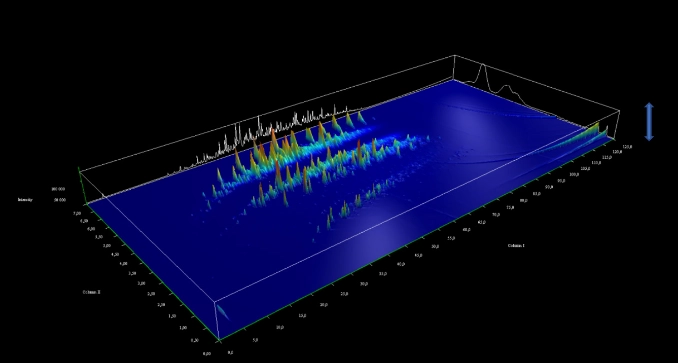
The results are P for Paraffins, N for Naphthenes, 1A for Mono-aromatics, 2A for Di-Aromatics, 3A for Tri-aromatics, and O for Oxygenated compounds
Conclusion
The analysis results obtained using Zebron ZB-1701 and ZB-1 GC columns together enabled the GC×GC-FID system to unravel molecular structures of oxygenated compounds in a coal-derived middle distillate. It also shows that the oxygenated structures mainly consist of phenolic compounds, and this characterization is crucial to help convert coal-derived oils into alternative fuels.
This study showed that compared to conventional configurations, a reversed configuration involving a highly polar column in the first dimension and a non-polar one in the second enables the separation of oxygenates and hydrocarbons in one single run. In fact, the 2D contour plots obtained under these conditions exhibit a good resolution and a high space occupation. Nevertheless, in the future there is still an opportunity to separate the nitrogenates from the oxygenates for improved quantification. Further study is needed utilizing either sample preparation or online fractionation in a multi-technical analytical approach with multi-dimensional gas chromatography.
Acknowledgement: This study was run at IFPEN, and we thank them for their collaboration on this project. Phenomenex is not affiliated with IFPEN.



